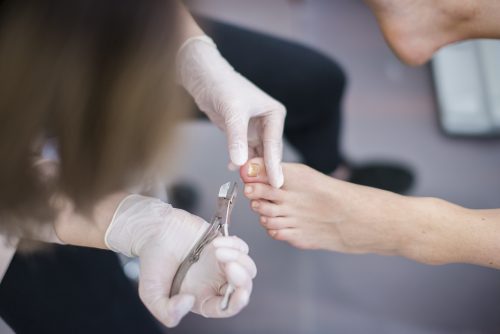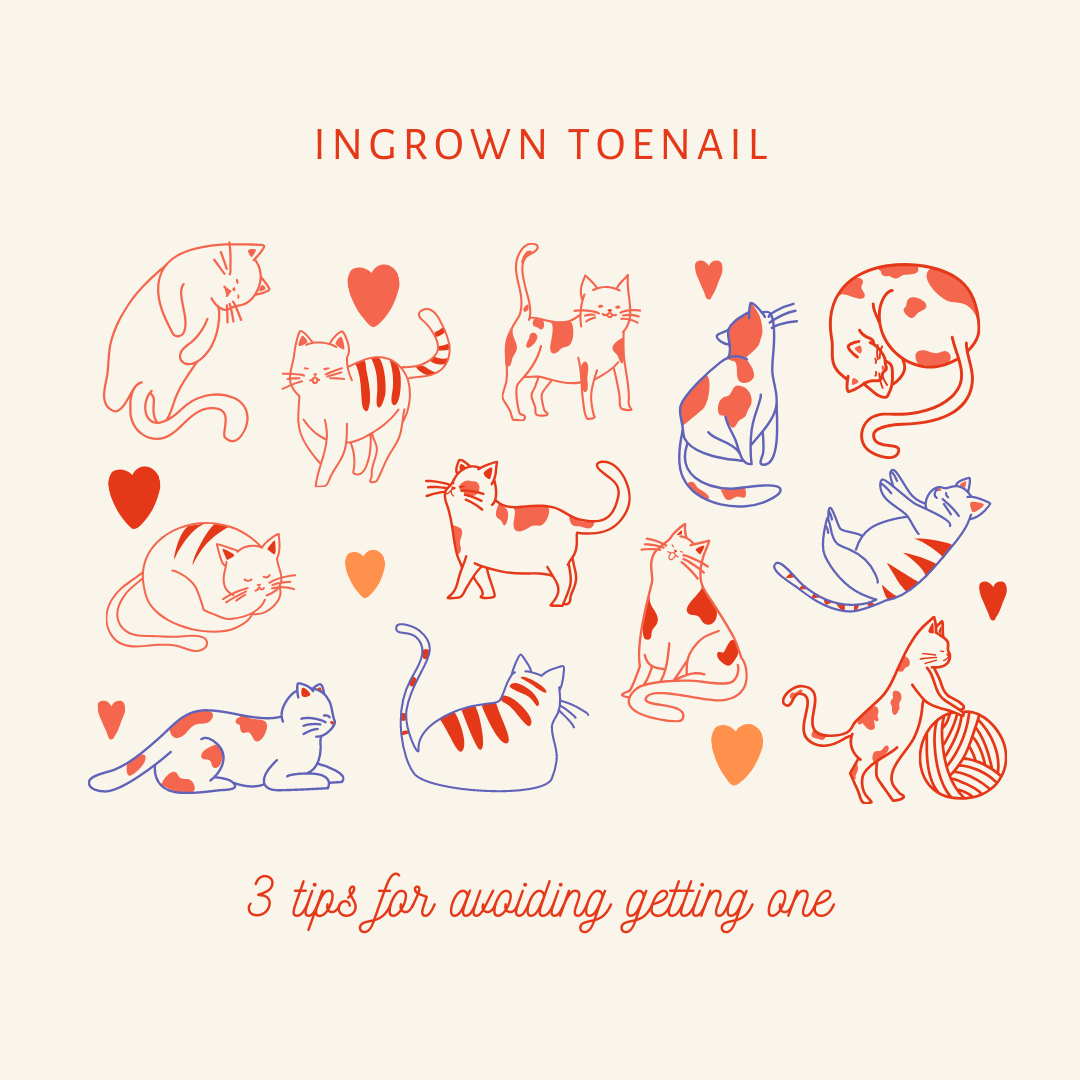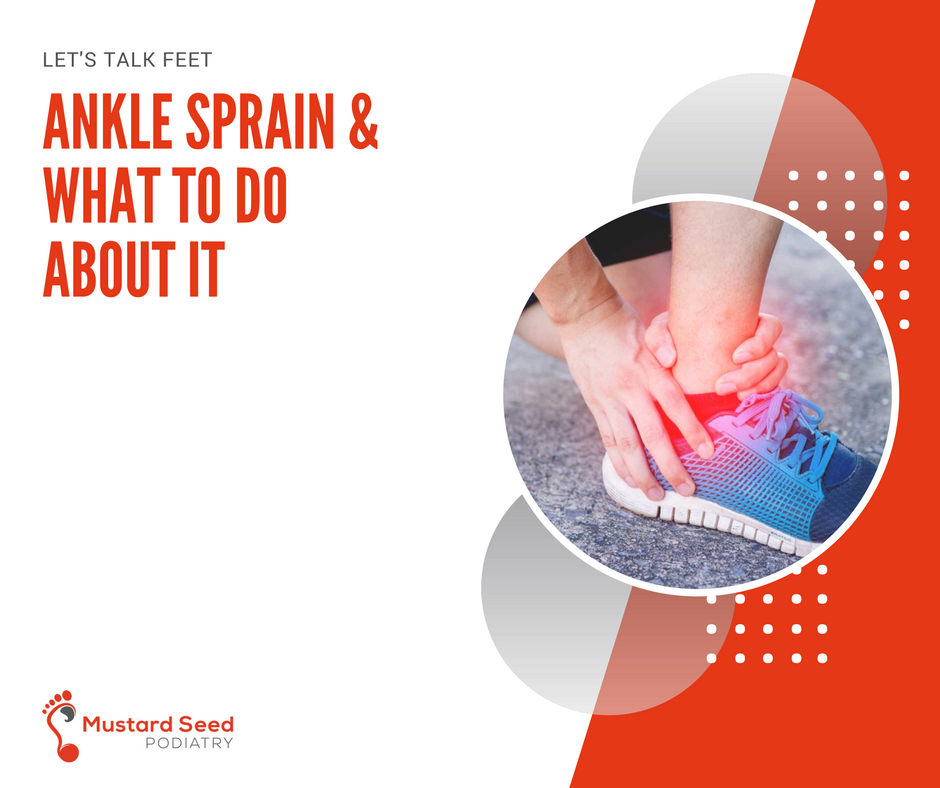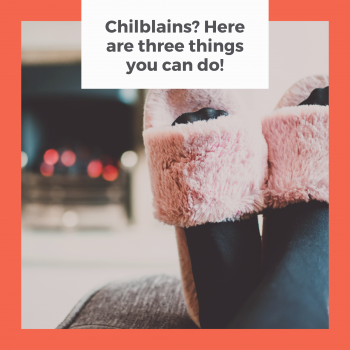No, ingrown toenail has nothing to do with cats, and vice versa. But, a bit of cat cuteness won’t hurt, right?
If we were to make a list of the most frequently seen conditions at a podiatry clinic, ingrown toenail would no doubt make it to top three. Ingrown toenail is much more common than what most people think. It does not discriminate. People of any age can get an ingrown toenail at some point in life. So, how should one avoid getting such a pain in the toe? Read on to find out our 3 tips!
What is ingrown toenail?

Ingrown toenail is rather self-explanatory. Most people would know that they have one when they have it. Typical symptoms include pain, especially with pressure on the toe, swelling, redness, and discharge in more severe cases.
Ingrown toenail typically affects the big toes. We rarely see ingrown toenails in the smaller toes. In fact, it is so rare that we can probably count the number of occasions with one hand. Big toenails are much wider and bigger than the rest of our toenails. For this reason, they are more prone to trauma and susceptible to becoming ingrown.
Direct trauma, such as stubbing your toe, dropping a heavy object on the toe, being stepped on, or playing sports that involve frequent start-stop and change in direction, is often an aggravating factor in most cases. However, for some individuals, they inherently have a higher risk of developing an ingrown toenail due to the anatomy of their toenails. Wide, curved, thickened toenails are particularly susceptible to becoming ingrown if not managed properly.
So, let’s have a look at the 3 steps to avoid getting an ingrown toenail!
1. Resist the temptation of getting your big toenails too short
If you are not one that likes your toenails short, this may not be applicable to you. However, we thought this was worth mentioning because we have seen many people who have a tendency to cut their toenails too short. You are more likely to leave a sharp corner or a spike of nail untrimmed if you try to cut your toenails too short or too deep.
On this note, we also want to advise you against plucking your toenails. The chance of plucking a toenail too short or deep is very high. And, that translates to a much higher risk of getting an ingrown toenail!
2. Avoid tight-fitting socks and shoes
Socks and shoes can put a lot of pressure on our big toes. Constant compression of the toenail against the skin can cause pain and irritation, mimicking the symptoms of an ingrown toenail sometimes. However, it is possible for a toenail to truly become ingrown, especially if the toenail is wide, thick or curved.
It is also important to make sure that your socks are not too thick for the shoes that you are wearing. For example, dressed leather shoes have less room for thick socks than a pair of sports shoes. It wouldn’t be wise to wear a pair of thickly padded socks in slimmer shoes. It will inevitably cause pressure on your big toenails.
3. Seek professional help when in doubt

Like we mentioned earlier, toenails that are wide, curved, or thickened are more likely to become ingrown than others. Our nail shape is often hereditary. Some people are born with smaller nails; some people are born with wider nails.
Having said that, our nail shape can change overtime due to constant external factors. For instance, wearing pointy shoes for a prolonged period of time would cause the toenails to bend, resulting in a curved toenail. Repetitive trauma from shoes can result in thickening of the toenails. Those who need to wear steel-capped boots for work are typically more affected.
If your toenails fall into this category, they can be challenging to manage. When in doubt, it is best to see a podiatrist to have them properly trimmed and get advice for ongoing management.
Lastly, don’t try to treat the ingrown toenail yourself.
Too often, many people try to treat the ingrown toenail themselves. That usually involves digging the corner out, or trimming the toenail further down. Sometimes that works, but sometimes it doesn’t. We have seen many ingrown toenails presented in a very challenging state as a result of attempted self-treatment. It makes it difficult for us to help you get relief. For you to get optimal result, it is best to avoid treating the problematic toe yourself.
Alright. So, that’s our 3 simple tips for avoiding getting an ingrown toenail. We hope you have found this blog post insightful. If you are new on this blog, welcome! We’ve thoroughly enjoyed your company today.
With the cooler weather slowing rolling in, find out why looking after your feet in winter is a good idea. Also, winter is going to be a great time to start treating fungal toenail infection because that will give you plenty of time to get your toenails ready for the next sandal season!
Don’t forget to head over to our Facebook and Instagram to stay connected with us! Till next time!




